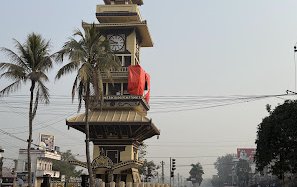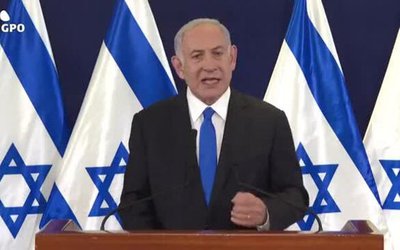
The process of building transmission lines and handling distribution is still going too slowly, despite the fact that the nation's power production and demand are both rising quickly.
Each of the more than a dozen transmission lines being built in Nepal is being obstructed and disrupted. This week marks the charging of Bharatpur-Bardaghat 220 kV after 13 years of obstruction and inconvenience. The last portion of the 220 kV Bardaghat-New Butwal line is still being built.
The construction of a transmission line such as the 220 kV Bharatpur-Bardaghat-New Butwal project is a testament to how difficult it is to economically transform a community that is poor and neglected.
The process of building transmission lines and handling distribution is still going too slowly, despite the fact that the nation's power production and demand are both rising quickly.
Each of the more than a dozen transmission lines being built in Nepal is being obstructed and disrupted. This week marks the charging of Bharatpur-Bardaghat 220 kV after 13 years of obstruction and inconvenience. The last portion of the 220 kV Bardaghat-New Butwal line is still being built.
The construction of a transmission line such as the 220 kV Bharatpur-Bardaghat-New Butwal project is a testament to how difficult it is to economically transform a community that is poor and neglected.
One year after the World Bank withdrew, despite tremendous pressure, the building of the Bharatpur-Bardghat 220 kV transmission line has been finished, and the infrastructure is prepared to transmit up to 1000 MW of power.
Although this strategically significant game-changing transmission line project should have been finished approximately five years ago to benefit many people, it was finally finished ten years ago and has had a significant positive impact on Nepal's electricity sector.
From Bharatpur in Chitwan to Bardghat in Nawalparasi (Bardghat Susta East), a 220 kV double circuit transmission line has been built.

The new Bharatpur Substation at Bharatpur Metropolitan City-11 Anptari in Chitwan to Bardghat Substation in Nawalparasi (Bardghat-Susta West) 74 km double circuit transmission line has been built.
The transmission line has a 1000 MW maximum capacity. The 132 kV voltage level will be used to commission the 220 kV double circuit transmission line initially.
After the transmission line is finished, it will be simpler to carry electricity from Bharatpur to the west, according to NEA Managing Director Kulman Ghising.
According to Ghising, managing director, "the construction of the dilapidated project was completed after continuous efforts due to obstruction from local people demanding change in the route of the transmission line," issue with tree felling, and subpar contractor performance.
The sole 132 kV single circuit available at the time allowed electricity to travel from Bharatpur to the west. More power needed to be sent from Bharatpur to the west, but the capacity of that connection wasn't being kept up. More electricity will be able to flow easily after the 220 kV line is built, and the voltage will also rise.
There are now 3 circuits, one of which is the original one, that transport electricity from Bharatpur to Bardghat. One circuit may provide up to 170 MW of power by charging a 220 kV line to 132 kV. The outdated single circuit was producing a power output of about 90 megawatts.
Construction is now underway on the 220 kV transmission line that will connect Bardghat to the brand-new Butwal Substation in Sunwal Municipality-13 Bhumhi in Nawalparasi. With a goal of finishing it by next month, work is now being done on the line. The 220 kV transmission line between Hetaunda and New Butwal Substation will then be connected following that.
The transmission line between Bharatpur and Bardghat is 74 kilometers long. The transmission line has 246 towers. In October 2010, Central China Power Grid International Economic and Trade Company and the project's construction were bound by a contract.

There are still challenges in the way of the Hetauda-Inaruwa 400 kV transmission line's completion, which is scheduled for 2015. Local opposition to the substation in Lapsifedi is a problem.
It's interesting to note that only one NGO is responsible for the legal and other disputes, but all of these initiatives are either supported by the World Bank or the Asian Development Bank.
The contract with the aforementioned company was terminated in July 2014 as a result of subpar performance, and NEA then released a fresh tender to complete the remaining work. A deal to finish the remaining work was made in July 2015 with the Chinese business Hengton Optics Electric.
Some villagers in Nawalparasi Vinayi Triveni Rural Municipality-2, Dumkibas, petitioned the High Court to amend the transmission line's path.
Following a request by the community, the High Court issued an interim order on April 21, 2021, halting the building of two skyscrapers in the region. On June 26, 2022, the High Court issued a stay on the order.
According to project manager Santosh Sah, construction began after an agreement was reached in March 2022 following ongoing conversations with the villagers over compensation and indemnification concerns.
More power could not be sent from Bharatpur to Bardghat because the Dumkibas obstacle prevented the transmission line from being built. A year ago, the 56 km single circuit transmission line from Bharatpur to Arun Khola in Nawalparasi was put into operation.
The finished 220 kV transmission line between Bharatpur and Bardghat was tapped at the Arun River and joined to the pre-existing 132 kV transmission line. At the Arun River, the Bardghat-Bardghat 132 kV transmission line was divided and joined to the Bharatpur-Bardghat 220 kV line.
The Hetauda-Bharpur-Bardghat 220 kV transmission line project was started with funding from the Government of Nepal, NEA, and a concessional loan from the World Bank to increase the transmission line's capacity and ensure the dependability of Nepal's integrated power system.
The remaining work was carried out with funding from the government and NEA after the World Bank left the project in October 2021.
Construction on the Hetaunda-Bharatpur and Bharatpur-Bardaghat sections of the project began. The Hetaunda-Bharatpur section's construction is complete, and one 132 kV circuit has been conditionally loaded and put into service.
Transmission line and roadway projects with multilateral funding have experienced delays before in Nepal. However, these initiatives aid Nepal's infrastructure and contribute to its economic success. The project, which was almost a decade late, is now finished. For NEA's MD Ghising, who has worked hard to remove the obstacle to this project, this is the best news possible.
- MELAMCHI WATER SUPPLY: No Interruption During Monsoon
- Jun 25, 2025
- KOREAN RETURNEES: Successful Integration
- Jun 25, 2025
- UPPER TRISHULI-1: Engaging With Local
- Jun 25, 2025
- IME GROUP: Twenty Five Years Of Journey
- Jun 24, 2025
- NEPAL’S AIR POLLUTION: A Growing Health Concern
- Jun 24, 2025















